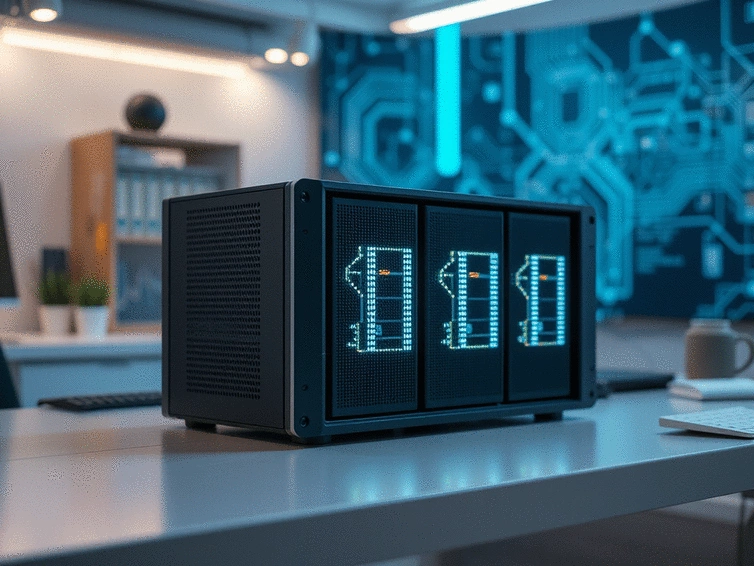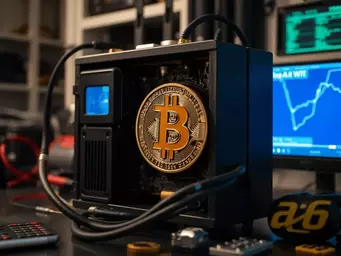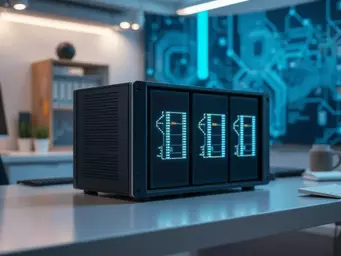
Understanding Blockchain Nodes Simply
Ever wondered how transactions maintain integrity in a decentralized world? The answer lies in the essential role of blockchain nodes, the unsung heroes keeping our digital landscape secure and functional.
What You Will Learn
- Blockchain nodes are crucial devices that maintain the integrity and security of the network.
- Different types of nodes, such as full nodes, validator nodes, and miner nodes, each play unique roles in transaction validation and consensus.
- Decentralization enhances resilience, transparency, and security, making blockchain networks trustworthy.
- Understanding the function of light nodes allows users to interact with blockchain technology more efficiently without full participation.
Key Roles of Blockchain Nodes
This visual outlines the primary functions and types of blockchain nodes, highlighting their critical contributions to network decentralization and security.
TYPE 1Full Nodes
Store complete transaction history, enforce rules, support network stability.
TYPE 2Validator Nodes
Confirm transactions, participate in consensus, often rewarded for efforts.
TYPE 3Miner Nodes
Create new blocks, validate transactions, secure network via PoW.
TYPE 4Light Nodes
User-friendly, resource-efficient, quick sync, partial blockchain storage.
Defining Blockchain Nodes and Their Significance
In the world of blockchain, you might have heard the term node tossed around quite a bit. But what exactly is a blockchain node? At its core, a blockchain node is any device that participates in the operation of a blockchain network. These nodes play a crucial role in maintaining the system, ensuring security, and facilitating communication among various participants. Think of them as the building blocks that keep the network alive and functioning.

Each node stores a copy of the entire blockchain, allowing it to validate and relay transaction data. This decentralization is key, as it means that no single entity controls the network, enhancing trust and reliability. For a deeper understanding of blockchain's role in government and secure systems, you can refer to this MITRE Corporation report on blockchain technology for government.
What Exactly Is a Blockchain Node?
To put it simply, a blockchain node is a computer that connects to the blockchain network. Nodes can fulfill different roles, from validating transactions to storing data. They communicate with each other to ensure that everyone in the network has the same up-to-date information. This is vital because it prevents fraud and ensures that all transactions are transparent and verifiable.
- Storage: Nodes keep a record of all transactions on the blockchain.
- Validation: They check and confirm the legitimacy of transactions.
- Communication: Nodes share information with other nodes to maintain synchronization.
This decentralized nature is what makes blockchain so revolutionary. It allows for transparency and security without a central authority. As we dive deeper into blockchain nodes, I’m excited to share how their roles impact the network as a whole!
The Role of Nodes in Blockchain Networks
Nodes serve several critical functions that keep the blockchain running smoothly. They validate transactions, which means they check that the data being added to the blockchain is accurate and complies with the network's rules. This validation process is essential to prevent double-spending and ensure that transactions are secure. The Federal Reserve provides insights into the governance of permissionless blockchain networks, highlighting the importance of these roles.
- Transaction Validation: Nodes ensure each transaction adheres to the blockchain's rules.
- Data Storage: They maintain copies of the entire blockchain to ensure redundancy.
- Consensus Contribution: Nodes work together to agree on the state of the blockchain, helping to reach a consensus.
Without nodes, the decentralized concept of blockchain wouldn’t exist. They contribute to the integrity and security of the network, which empowers users to trust in the system. It’s fascinating how these interconnected devices collaborate to create a secure ecosystem!
Understanding Decentralization Through Nodes
Decentralization is one of the most important features of blockchain technology. Through the distribution of nodes across various locations, the network enhances its resilience and reliability. If one node fails or is compromised, the others can still maintain the integrity of the blockchain. The National Institute of Standards and Technology explains the fundamental concepts of blockchain in their Blockchain Technology Overview, which further elaborates on the importance of decentralization.
- Resilience: Multiple nodes mean the network can withstand attacks or failures.
- Transparency: Everyone with access can see and verify transactions, promoting trust.
- Immutability: Once data is confirmed by multiple nodes, it becomes practically impossible to alter.
This distribution helps mitigate risks and ensures that no single point of failure can disrupt the entire system. When I think about how decentralization empowers users, I’m reminded of the potential it has to reshape our financial landscape!
Exploring Different Types of Blockchain Nodes
Understanding Full Nodes and Their Functionality
Full nodes are the backbone of the blockchain network. They store the complete history of transactions and ensure that all new transactions are valid before they are added to the blockchain. By participating in the network, these nodes help maintain the integrity and security of the ledger.
- Complete Transaction History: Full nodes keep a complete record of all transactions.
- Rule Enforcement: They enforce the consensus rules of the blockchain.
- Network Support: By being active participants, they help improve network stability.
Operating a full node can be resource-intensive, but it plays a vital role in ensuring that the blockchain remains decentralized and secure.
The Importance of Validator Nodes and Their Mechanisms
Validator nodes are essential for consensus mechanisms, like Proof of Work (PoW) and Proof of Stake (PoS). They are responsible for confirming transactions and adding them to the blockchain. In PoW, for example, these nodes solve complex mathematical problems to validate new blocks.
- Transaction Confirmation: Validator nodes confirm the authenticity of transactions.
- Consensus Participation: They play a role in reaching agreement on the state of the blockchain.
- Incentives: Often rewarded with cryptocurrency for their efforts in validating transactions.
The mechanisms behind these nodes can vary, but their importance in maintaining the network's integrity cannot be overstated. Learning about these distinctions helps demystify how blockchain technology operates!
Miner Nodes: The Backbone of Transaction Validation
Miner nodes participate in the process of creating new blocks through mining. They validate transactions, package them into blocks, and compete to solve mathematical puzzles that secure the network. This process helps maintain consensus through the PoW mechanism.
- Transaction Validation: They check and confirm transactions before adding them to blocks.
- Block Creation: Miner nodes create new blocks to be added to the blockchain.
- Economic Incentives: Miners earn rewards for their work in the form of cryptocurrency.
Without miner nodes, the network would struggle to maintain its security and transaction speed. They are critical players in the blockchain ecosystem!
Special Cases: Exploring Collator Nodes in Polkadot
Collator nodes are unique to certain blockchain platforms, including Polkadot. They are responsible for producing new blocks and validating transactions by gathering data from various parachains.
- Block Production: Collators create new blocks from transactions collected across parachains.
- Cross-Chain Interoperability: They facilitate communication between different blockchains.
- Enhanced Efficiency: Collators help improve scalability and transaction speed.
This specialized function of collator nodes showcases the versatility of blockchain technology and its ability to adapt to different needs and platforms.

Light Nodes: A User-Friendly Approach to Blockchain
Light nodes offer a simplified way for users to interact with the blockchain without needing to download the full history. They only store a small part of the blockchain, making them much lighter and easier to run.
- Resource Efficiency: Light nodes don’t require as much storage or processing power.
- User Accessibility: They allow users to access blockchain services without full participation.
- Quick Synchronization: Light nodes can sync to the network faster than full nodes.
This flexibility makes light nodes an attractive option for those who want to engage with blockchain technology without the complexity of running a full node.
Pro Tip
Did you know? Running your own blockchain node not only helps secure the network but also allows you to earn rewards in some blockchain ecosystems. By participating actively, you contribute to decentralization and gain firsthand experience of how blockchain technology operates.
Frequently Asked Questions about Blockchain Nodes
- Full Nodes: Store complete transaction history and enforce network rules.
- Validator Nodes: Confirm transactions and participate in consensus mechanisms (e.g., PoW, PoS).
- Miner Nodes: Create new blocks by solving complex problems and validate transactions.
- Collator Nodes: (Specific to Polkadot) Produce new blocks and facilitate cross-chain communication.
- Light Nodes: Resource-efficient, user-friendly nodes that only store a partial history of the blockchain.
- Storage: Keeping a record of all transactions.
- Validation: Checking and confirming the legitimacy of transactions against network rules.
- Communication: Sharing information with other nodes to maintain network synchronization.
- Consensus: Working together to agree on the state of the blockchain.
Summarizing the Importance of Blockchain Nodes
In our journey through the intricate world of blockchain, we’ve uncovered the critical role of blockchain nodes in maintaining a decentralized network. Nodes serve as the backbone of blockchain technology, ensuring that transactions are validated and data is securely stored. Their existence fosters a resilient, trustworthy platform where users can engage confidently, knowing that their transactions are protected.
Understanding blockchain nodes isn't just for tech enthusiasts—it's essential for anyone looking to navigate the cryptocurrency landscape. The nodes validate the integrity of the network and, ultimately, contribute to the security of your investments. With this foundational knowledge, you’re better equipped to appreciate the decentralized nature of platforms like Bitcoin!
Engaging with the Blockchain Community
Now that you’ve learned about the importance of nodes, why not take the next step? I encourage you to explore running your own node! Engaging with the blockchain community can be incredibly rewarding. Here are a few ways to get involved:
- Join forums and discussion groups focused on blockchain technology.
- Participate in online workshops or webinars to learn from experienced operators.
- Follow influential voices in the blockchain space on social media.
- Share your experiences and insights with others—every contribution counts!
By immersing yourself in the community, you can deepen your understanding and connect with others who share your passion for cryptocurrency. Plus, running a node can provide a hands-on experience that enhances your learning!
Further Resources for Aspiring Node Operators
If you’re ready to dive deeper into the world of blockchain nodes, there are plenty of resources available to help you on your journey. Here’s a list of valuable links and tools:
- Bitcoin Full Node Guide - A comprehensive resource for setting up a Bitcoin node.
- Ethereum Documentation - Detailed information about running Ethereum nodes and participating in the network.
- Bitcoin Subreddit - A community forum for discussions, Q&A, and sharing experiences.
- Blockchain Explorer - A tool to track transactions and understand how nodes interact with the blockchain.
These resources will equip you with the knowledge and tools you need to become a confident node operator. At How Does Bitcoin Work, we’re committed to guiding you through this fascinating digital landscape. Let’s take this journey together!
Recap of Key Points
Here is a quick recap of the important points discussed in the article:
- Definition of Nodes: A blockchain node is any device that participates in the operation of a blockchain network, playing a crucial role in maintaining the system's security and functionality.
- Roles of Nodes: Nodes validate transactions, store data, and communicate with each other to ensure synchronization across the network.
- Decentralization Benefits: The decentralized nature of blockchain enhances resilience, transparency, and immutability, reducing the risk of single points of failure.
- Types of Nodes: Key node types include full nodes, validator nodes, miner nodes, collator nodes, and light nodes, each serving unique functions within the blockchain ecosystem.
- Community Engagement: Engaging with the blockchain community can enhance your understanding and provide valuable insights into operating your own node.





Understanding Blockchain Security Basics
Create a blog post title that is 5 words or less for a post that is about the following "Bitcoin Mining Software Comparison: Features and Setup Guides" Please avoid superlatives. Please avoid the futuristic, superlative, robotic-type language. provide the title only and no other details.
Understanding Blockchain Nodes Simply
Set Up Your Bitcoin Wallet
Choosing the Right Bitcoin Wallet